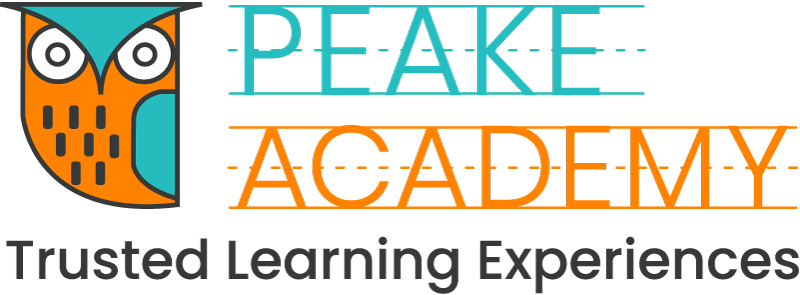Keep It Fun! Turning Learning into an Adventure for your Preschooler
Keeping learning fun and adventurous for preschoolers is crucial for their development. When education is enjoyable, children are more likely to engage with the material and retain information. Fun, interactive learning fosters creativity, critical thinking, and a love for discovery, laying a strong foundation for lifelong learning. By making education an adventure, parents can create lasting memories and a positive association with learning that will benefit their children throughout their lives.
Incorporate Storytelling
Every child loves a good story, and weaving educational content into narratives can be an immensely effective way to capture your child's attention. Turn the alphabet into characters of a grand tale, where 'A' might be an astronaut aiming for the stars, and 'B' could be a bear that loves to bounce. Use books, or better yet, make up your own stories together. This not only enhances listening skills but also encourages imagination and creativity, creating lasting memories with each tale told.
Create a Treasure Hunt
Learning can be turned into an interactive game with the simple setup of a treasure hunt. Hide letters, numbers, shapes, or color-coded items around your home or yard. Each find can be a clue to the next, leading ultimately to a small reward. This not only makes learning fun but also integrates physical activity, critical thinking, and problem-solving. The excitement and joy of discovery will be moments they remember.
Use Technology Wisely
In today's digital age, screens are inevitable, but they can be powerful educational tools when used appropriately. Choose apps and games that are designed for educational purposes and involve active rather than passive interaction. Look for ones that require input from the child, like puzzles or story-making games, which encourage engagement and learning, providing memorable interactive experiences.
Take Learning Outdoors
Nature is one of the best classrooms for a child. Go on nature walks and turn them into learning sessions. Teach colors through flowers, shapes with leaves, and numbers with stones. Engage their senses by encouraging them to touch, smell, and see the natural world, making learning a fully immersive experience. These outdoor adventures are not only educational but also full of joy and exploration.
Engage in Role-Playing
Children love to imitate adults. Set up a grocery store, a restaurant, or a post office at home. These role-playing games can teach children about money, importance of different food types, writing skills, and the concept of exchange. It makes learning social and practical skills fun and applicable in everyday life. Playing different roles can create vivid memories and a deeper understanding of the world.
Art Integration
Art can be a wonderful medium to teach a wide array of subjects. Use drawing, painting, or crafting to explore concepts such as geometry (think shapes and sizes), science (mix colors to learn about blending), and literacy (label parts of a drawing). This not only helps in developing fine motor skills but also allows children to express what they learn in a tangible form. Art activities often turn into memorable moments as they proudly show their creations.
Cooking Together
Involve your child in cooking meals. This can be a great way to teach measurements (math), change of states (science), and following instructions (literacy and listening skills). The bonus? Cooking together not only teaches valuable life skills but also creates wonderful bonding moments, capturing the joy of creating and tasting together.
Make Use of Music and Dance
Incorporating music and movement into learning can enhance memory and make abstract ideas more concrete. Create songs to remember the alphabet, numbers, or days of the week. Dance can help teach concepts like over, under, around, and through, which are important prepositions but also great for physical activity. These musical and dance sessions often become cherished memories for both the child and parents.
Build a Learning Space
Create a special corner in your home that is dedicated to learning adventures. Decorate it with maps, plants, books, and other educational materials that stimulate curiosity. This designated space can serve as a "launch pad" for daily learning adventures and can be stocked with rotating themes depending on the interest and the educational focus of the week. This personal learning nook helps in creating a special backdrop for many memorable learning moments.
Reflect and Adapt
Children change rapidly, and so do their interests. Regularly spend time reflecting on what works and what doesn’t, and be prepared to adapt your methods. This could mean changing the thematic focus of learning activities, the complexity of tasks, or even the time of day that these activities occur. Keeping learning adaptable and responsive helps maintain the child's interest and enthusiasm, fostering a treasure of emotional development. The goal is to make learning not just an adventure but a treasured part of everyday life that your child looks forward to with enthusiasm. These moments of growth and joy will be remembered fondly as they grow older, laying a strong foundation for cognitive, social, and emotional development.
Free Resource
Thank you for reading this content. And if you loved this post, please be sure to join our Parent Advisor Facebook group where we share more insights and community.
Transform everyday learning into an exciting quest for your little one! Dive into our article and snag a FREE set of Independent Play Activity Cards to inspire creativity and self-reliance in your preschooler.
Everyone deserves self-care
The same goes for busy moms like you. So let's do it together and create a healthy habit!
Join the 30-Day Happy Mom Challenge Today!
Visit our Parent Advisor and The Buzz Blogs to learn more about related topics and parenting tips. You are welcome to join our private Parent Advisor Facebook group. It’s a growing community of parents and preschool teachers where you can learn and share more parenting tips.












